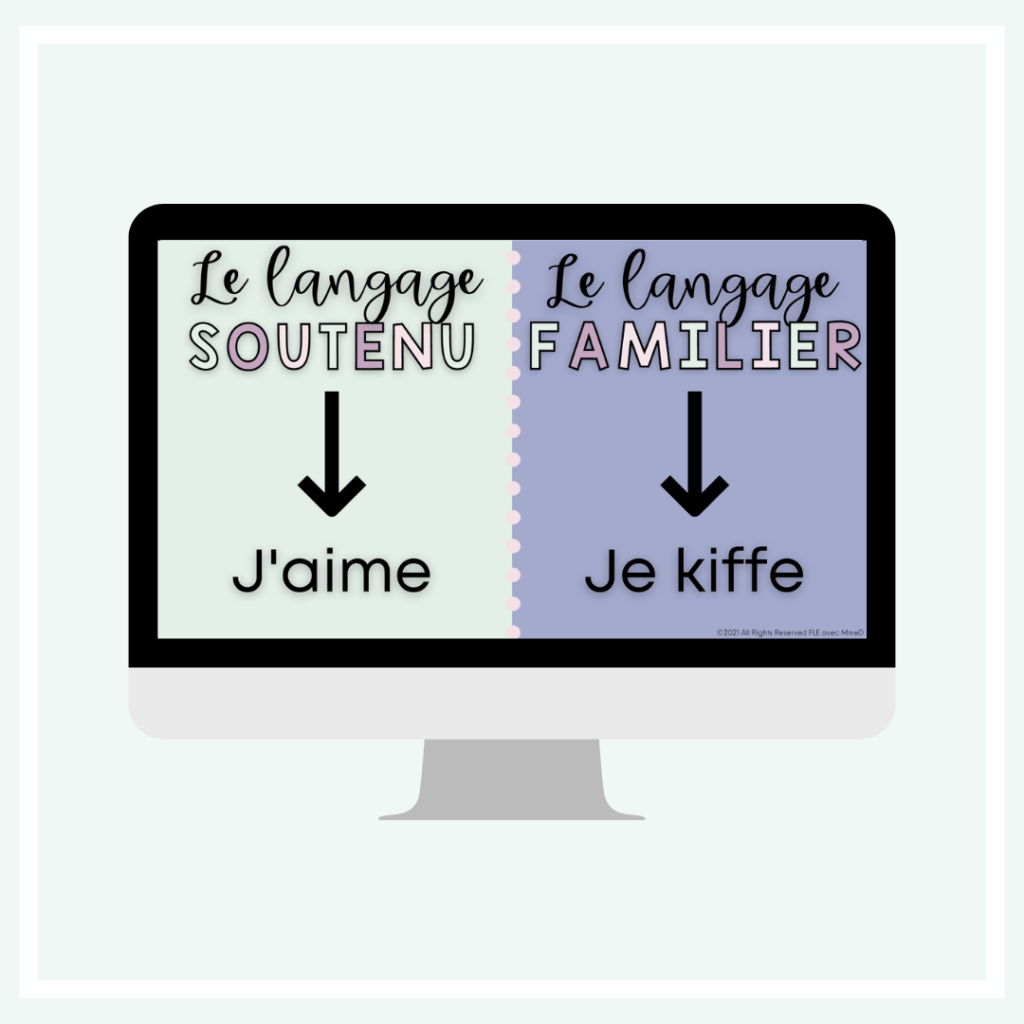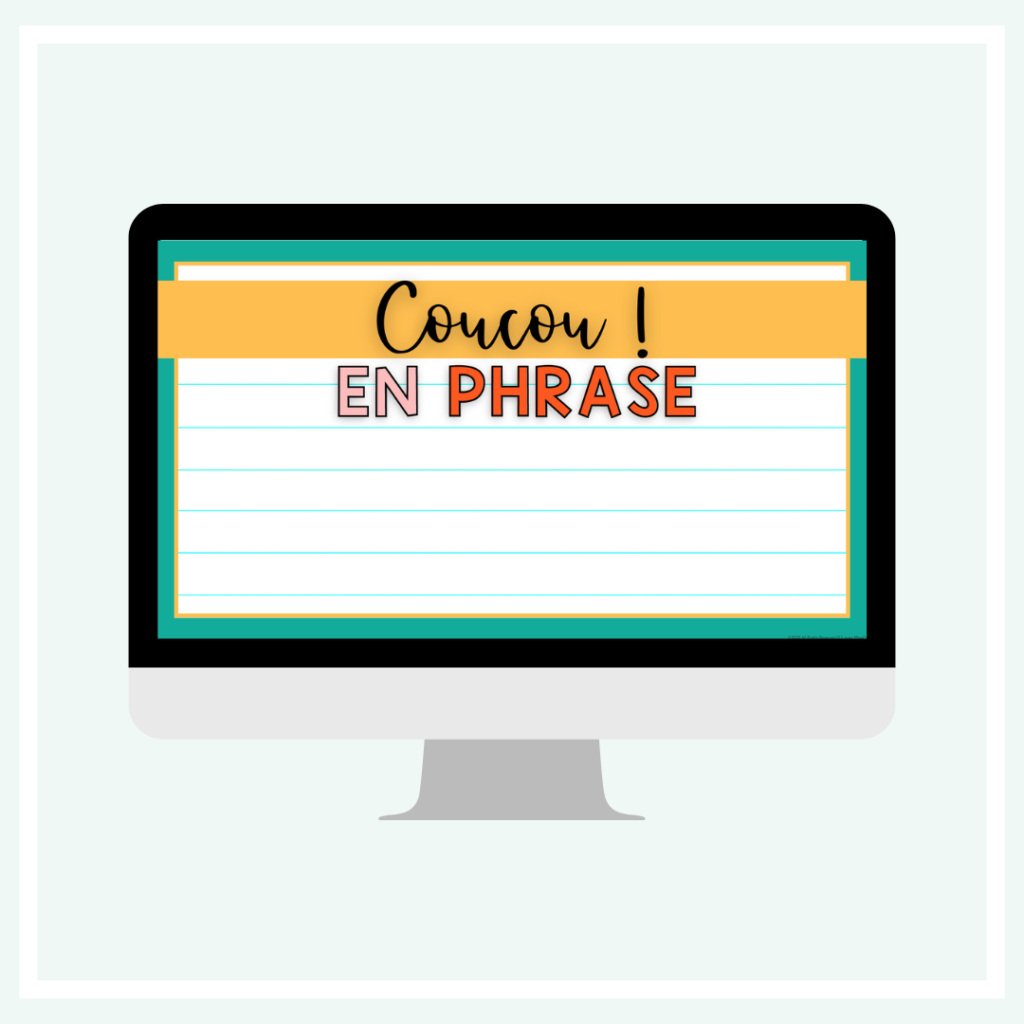
So you’re a middle or high school Core French or French Immersion teacher and you want to teach French idiomatic expressions? How do you go about teaching French idioms to your class in a way that is meaningful and effective? Dear fellow French teacher – I’ve got the solution for you! Here are all of the deets on teaching French idiomatic expressions!
How not to teach French idiomatic expressions
In the first few years of my career, I taught exactly how my French teachers taught me.
So I gave my students a list of French idiomatic expressions. Not only were the expressions were far too difficult, I also had them translate the list of expressions into English.
They learned nothing, except how to translate French sentences using a phone.
I no longer do that. I no longer :
- hand out a list of French idioms
- teach expressions that are too difficult for my students’ level of French
- ask them to translate expressions into English
Step 1 : Pick what French idiomatic expressions you want to teach at each level
I teach beginner to advanced Core French (13-17-year-olds). I have spent the last three summers searching the Internet for a wide variety of French idioms for language learners.
Now that we’ve scoured the Internet for relevant expressions, here are some fun ways to teach ways to teach French idioms.
Beginner French idiomatic expressions

For beginner French students, I pick very easy, simple expressions. A lot of these expressions are things I learned from living in an immersive environment.
Possible expressions could be “toc toc”, “à tes souhaits” and “miam miam”.
I like keeping them simple because I want my beginner French students to use the expressions right away.
Click here to learn more about this basic expressions resource.
Intermediate idiomatic expressions
For intermediate students, I choose expressions with “c’est” and expressions with verbs such as avoir, être, faire, aimer, etc.
Click here to learn about this intermediate expressions resource.

French slang terms for intermediate to advanced Core French students

I also LOVE, LOVE, LOVE to teach French slang to intermediate students.
These are all expressions I have picked up from watching French TV shows and movies. They are so fun!
When I taught these to my grade 10s, my students were so excited to be learning “real and cool French”.
The best part was that they actually used the French slang in class when conversing with me and one another!
Expressions for advanced students
These expressions are definitely the most challenging. Therefore, I teach these to my Grade 11 students.
They’re still really fun!
Click here to learn more about this advanced expressions resource.

Step 2 : Teach 1-2 French idioms per week to your students and no more than that
This is the key! I teach no more than TWO French idiomatic expressions a week to my classes.
When I teach 2 a week, they actually focus on the expression and put it to use right away. I also make sure that I use the two expressions during my lessons naturally.
This is a very effective way to teach French idioms to language learners.
I also give out prizes to students who use the French idioms in the correct context and fit it naturally into whatever we’re going or talking about.
Step 3 : create your slides for each expression
This is the part that took me a few summers. If you do not want to spend your summers creating slides, you can purchase the ones I have created.
Slide #1 : what do you think this French expression means?

With slide, I have my French class guess what the expression could possibly mean.
Sometimes they guess correctly and other times they have no idea whatsoever.
This is a fun way to teach French idioms because sometimes the predictions are so wild and sometimes so accurate. It’s just a fun way to play with language.
Slide #2 : see the French idiomatic expression in action
The purpose of this slide is to see the expression in action in writing and with visual support.
So they see a written example with the French idiom in use. If they do not understand some of the words, they can also use the image to help decode the example sentence.

Slide #3 : learn new vocabulary

The purpose of these types of slides is to break down new vocabulary that students may not be familiar with.
Some of the resources have 1-type of this slide and others have two!
Slide #4 (French slang only) : compare standard and slang forms of the same expression
The purpose of these types of slides is to break down new vocabulary that students may not be familiar with.

Slide #5 (French slang only): learn about the origins of the expression

Learn about the unique origins of the different French slang on this slide.
Slide #5 : write your own sentence using the expression
Now it’s time for students to write their own sentences with the expression.
At the start of the semester, we do this as a whole class. After a few weeks, I either get to write a sentence with their table groups, with a partner, or independently.



